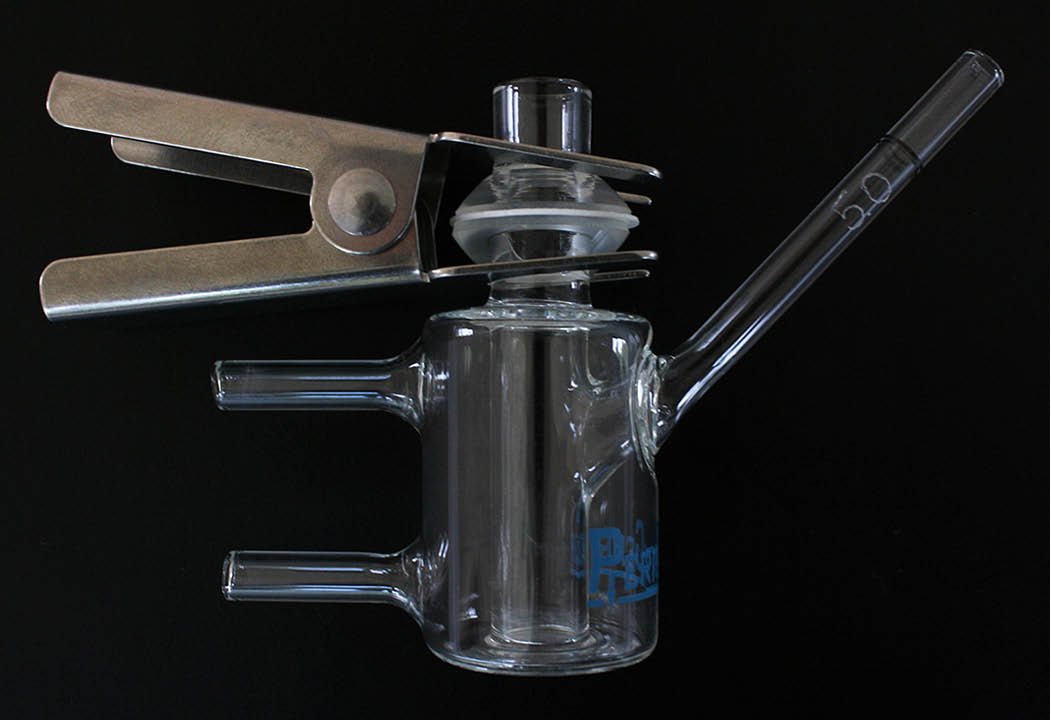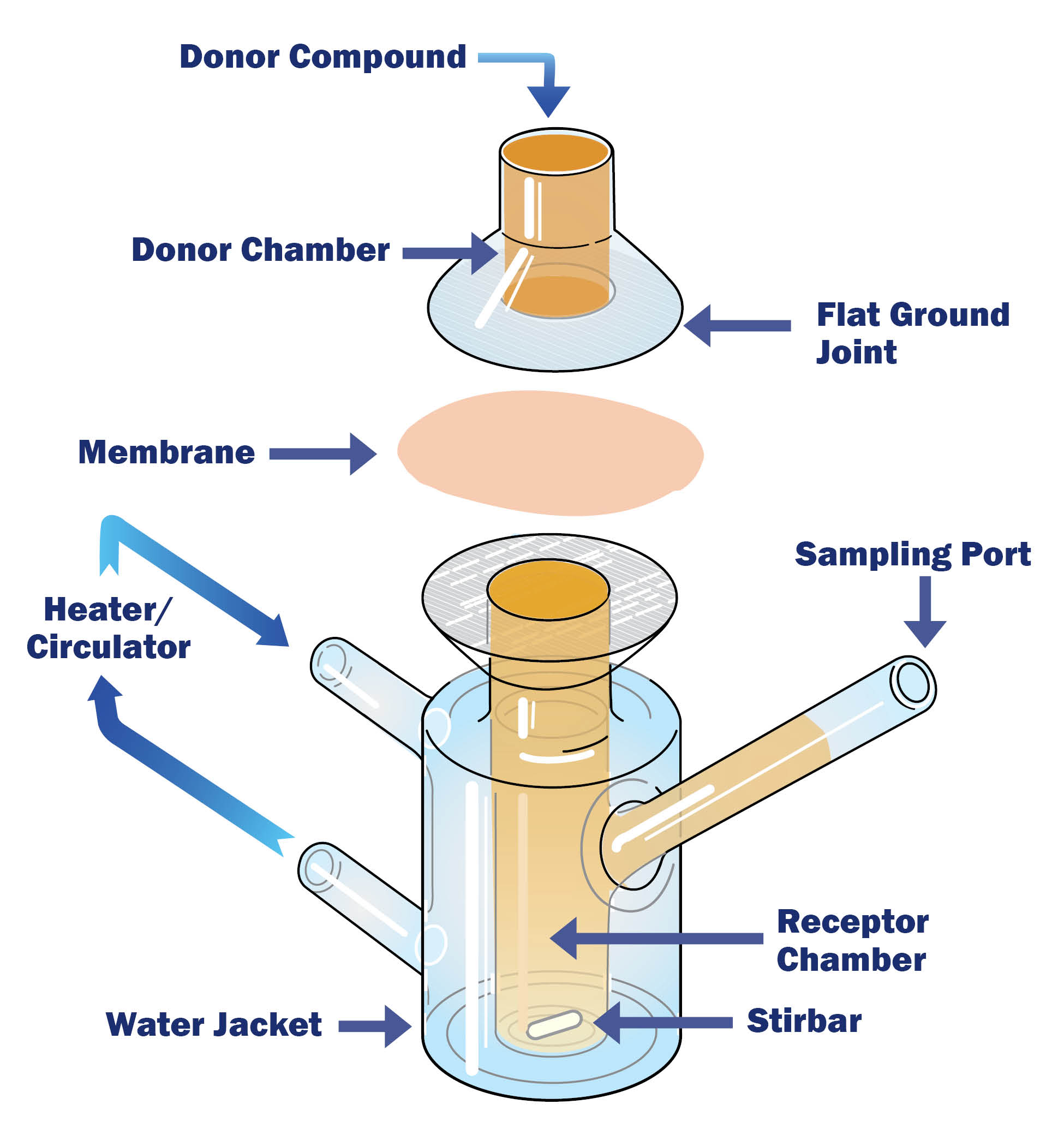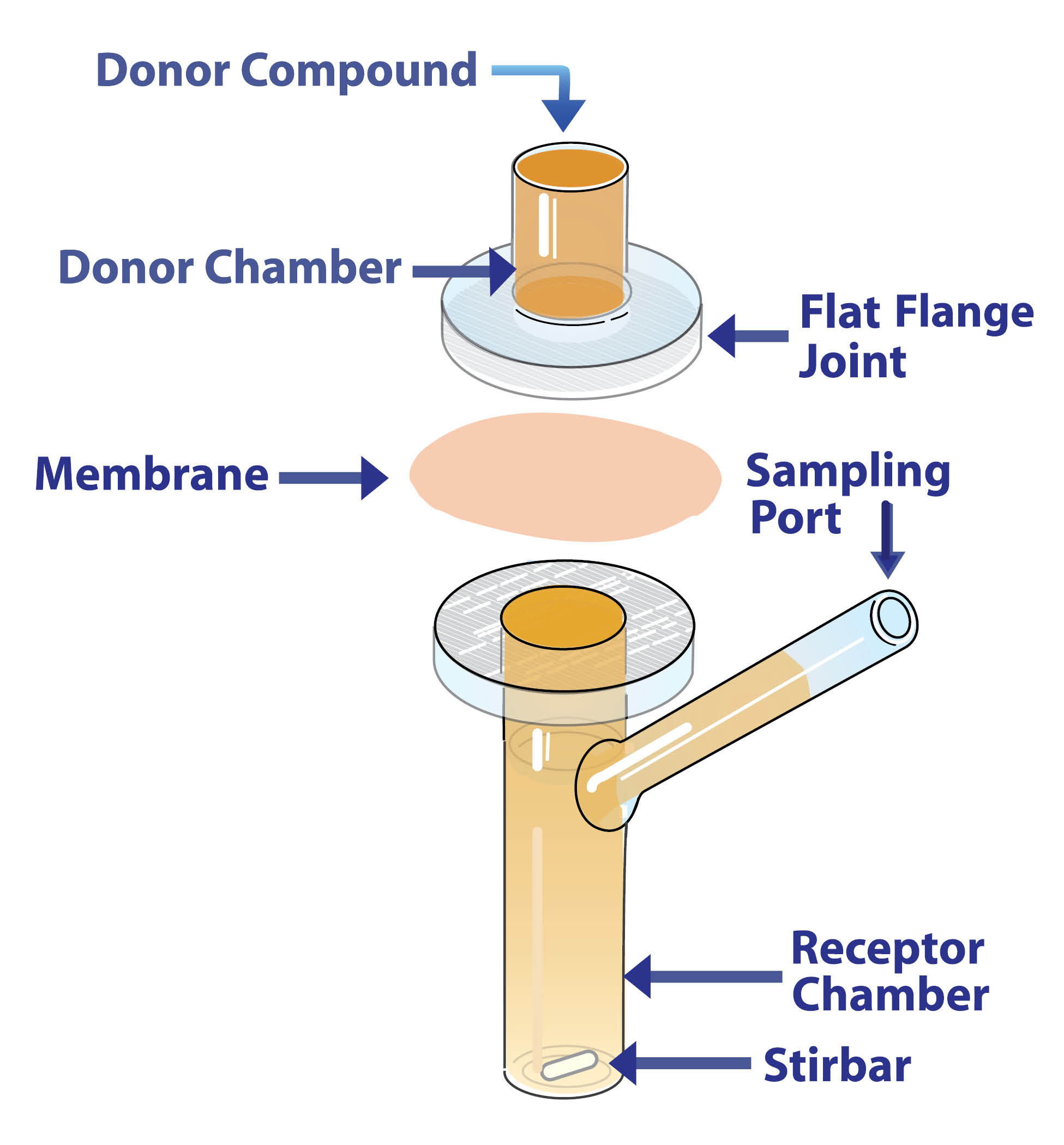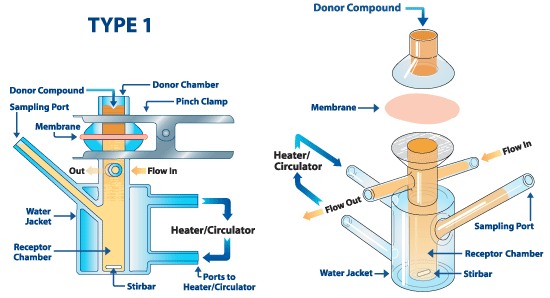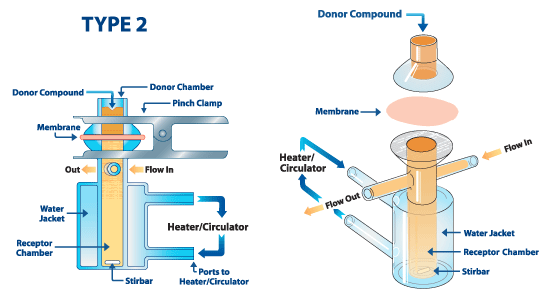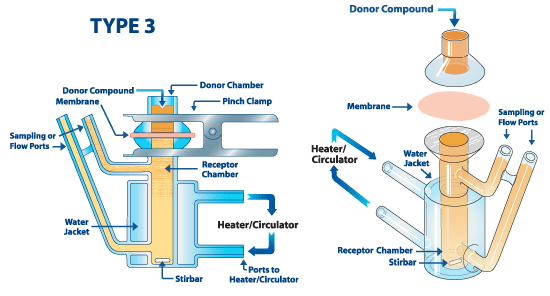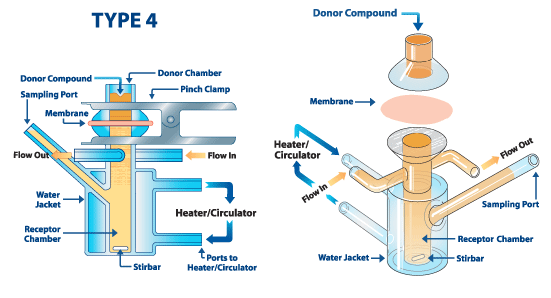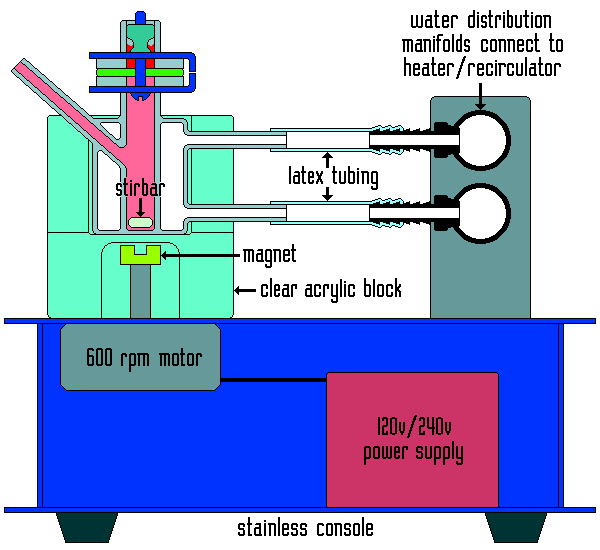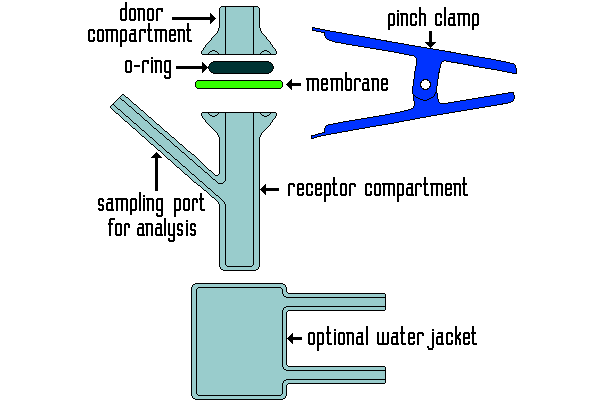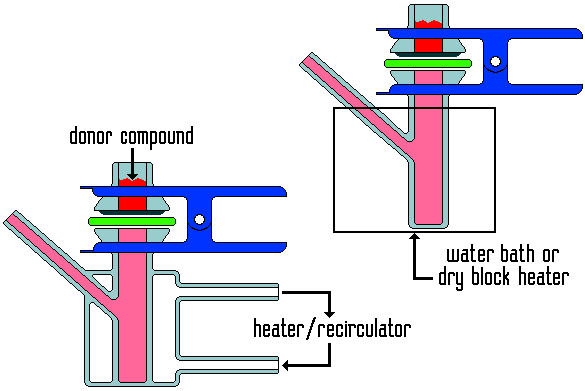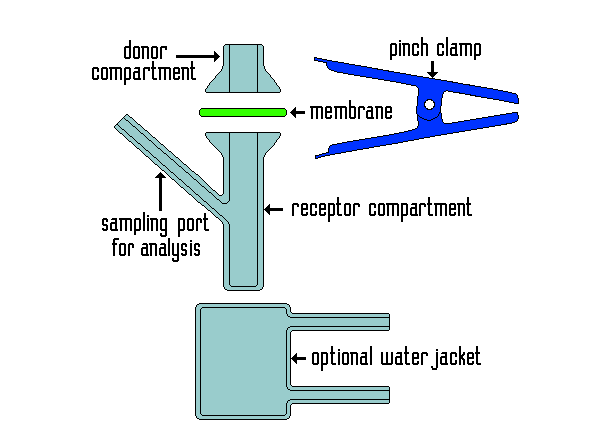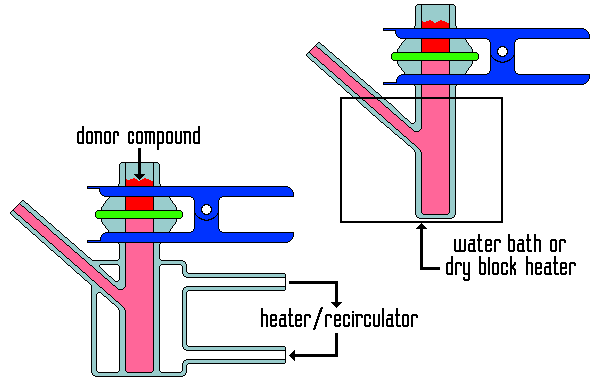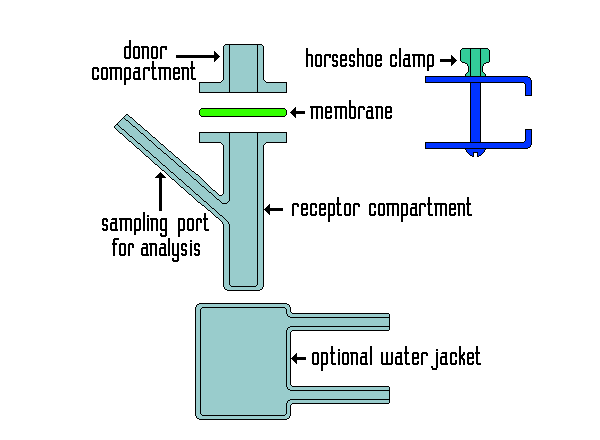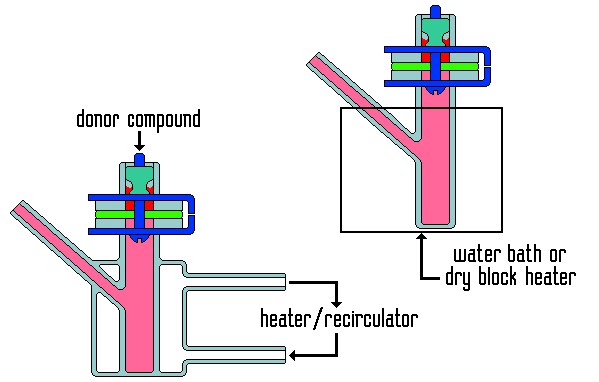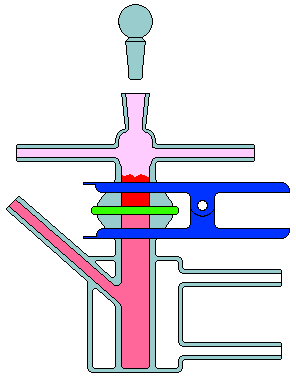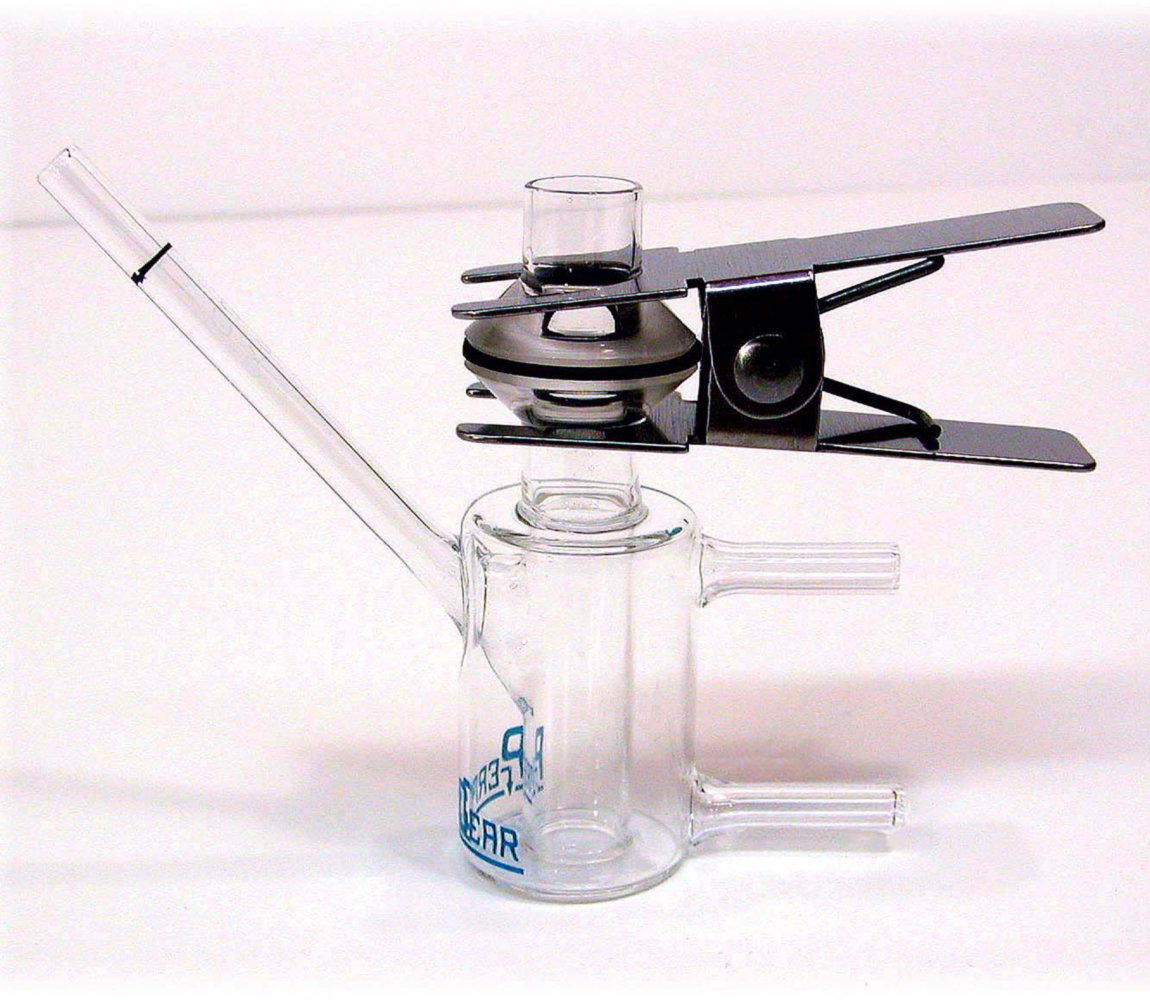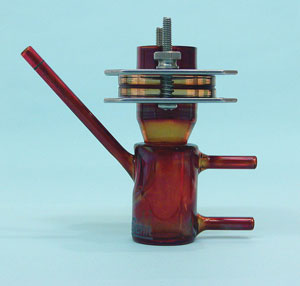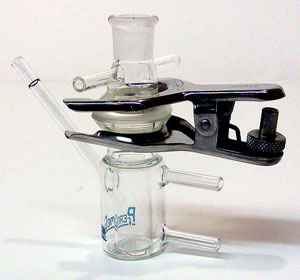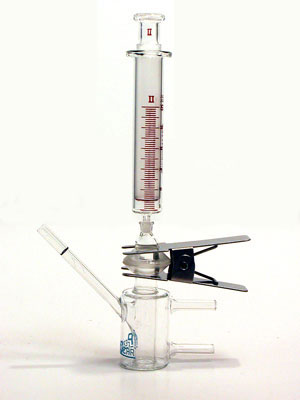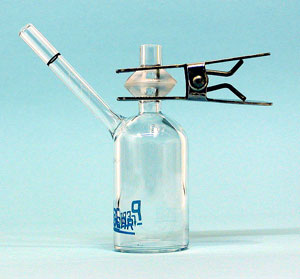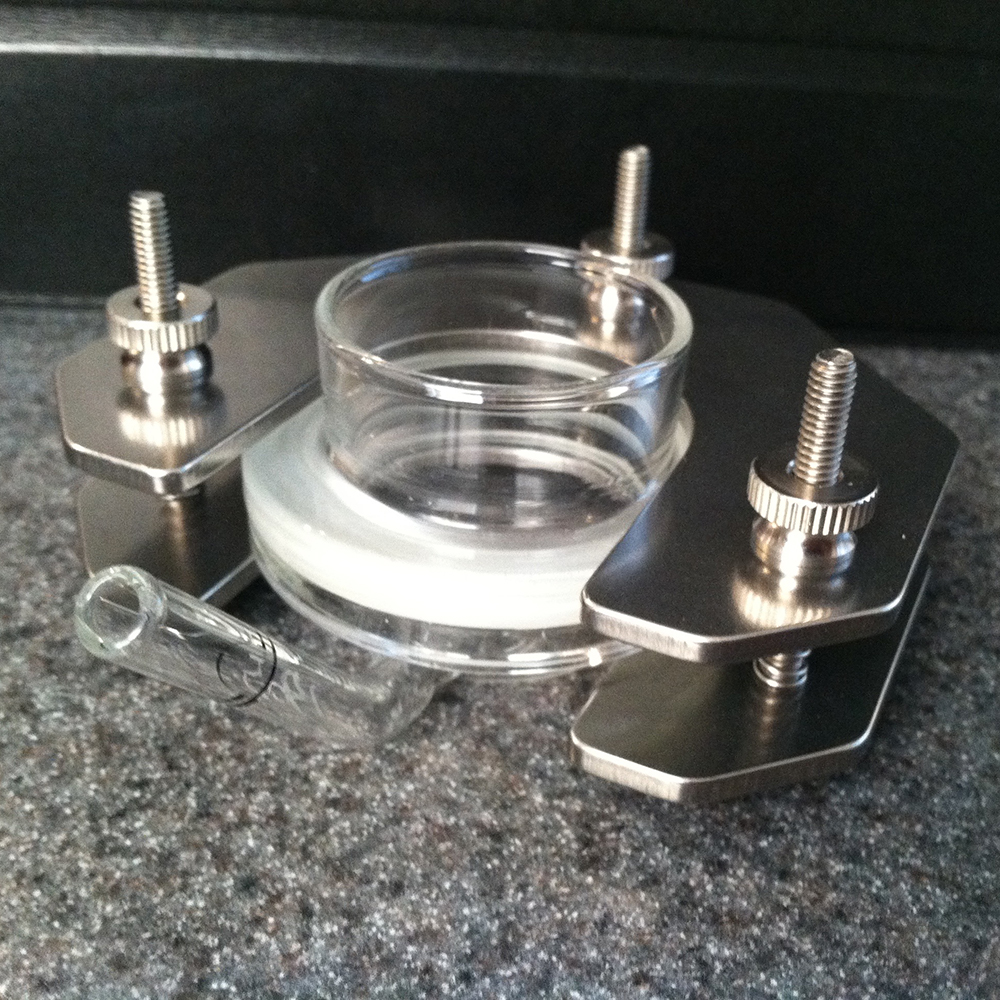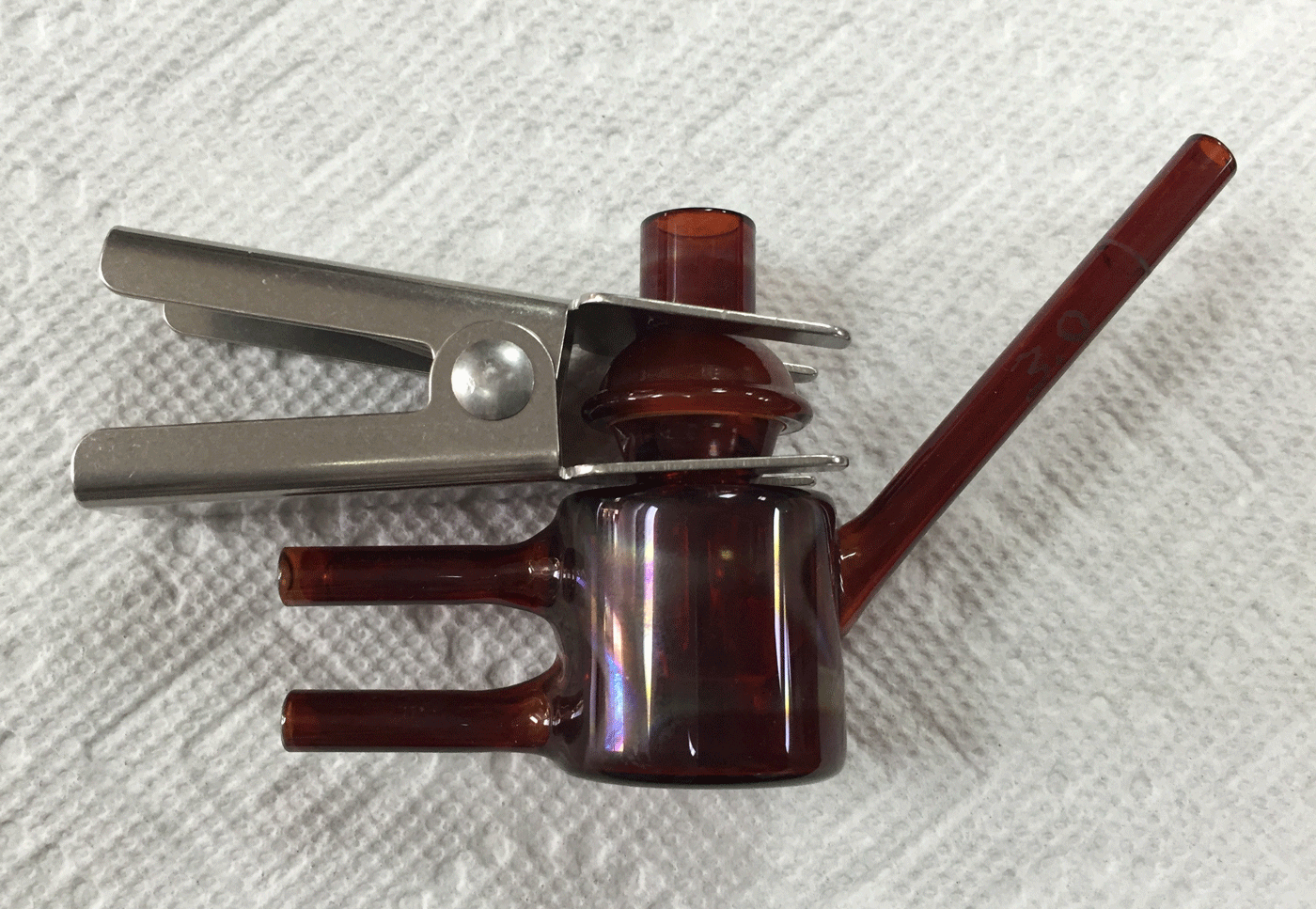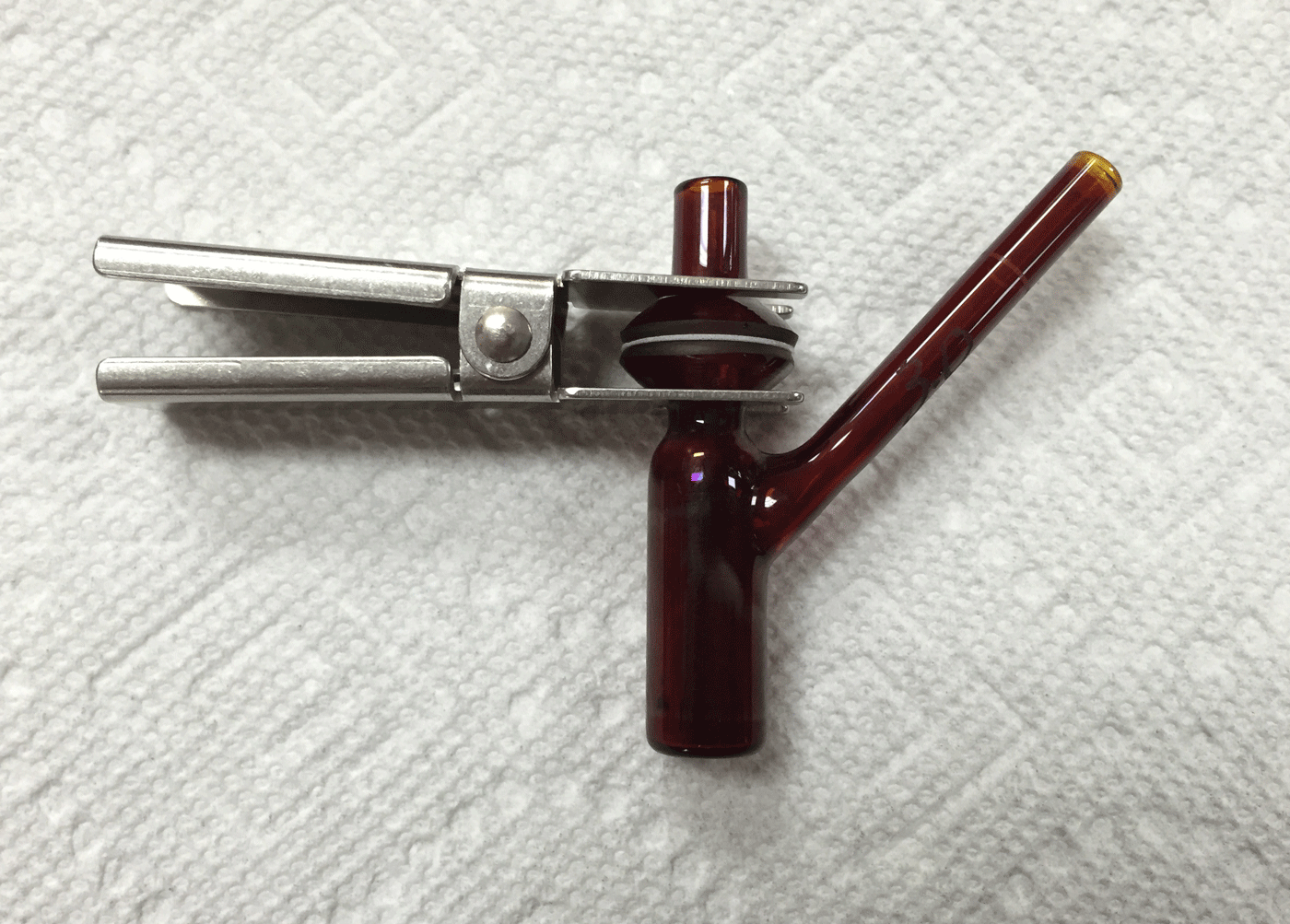PermeGear vertical glass diffusion cells are classic Franz Cells. Standard orifice diameters are 5mm, 7mm, 9mm, 11.28mm, 15mm, 20mm and 25mm, other diameters are custom. The word “orifice” as it refers to a Franz Cell is the area at the top of the receptor chamber that is exposed to the membrane or device through which transport or permeation is being studied. Corresponding volumes from 5ml to 20ml are standard and are listed under Typical Dimensions. Clamping is achieved through o-ring joints, flat ground (ground o-ring) joints and flat flange joints. We manufacture our own clamps for the most popular Franz Cell models. Our clamps are all stainless steel and are much easier to use than clamps from other suppliers.
We welcome requests for custom cells!
Ordering Information
Part numbers are generally made up of 2-character codes separated by hyphens.
1st code is cell type:
- 4G is for a jacketed cell, 6G is for an unjacketed cell
2nd code is joint type:
- 00 is an o-ring joint
- 01 is a flat ground (ground o-ring) joint
- 02 is a flat flange joint
- 03 is a spherical joint generally used for corneal work – please see additional information in the 4th code.
3rd code is glass type:
- 00 is for clear glass
- 01 is for amberized glass
4th code is orifice diameter in millimeters, 05 through 25, if the cells do not have a spherical (ball and socket) joint
Franz Cells with a spherical (ball and socket) joint are often used for corneal research and have 4 digit codes. The first two digits are for the orifice diameter, the last two digits are for the diameter of the spherical surface surrounding the orifice.
The following configurations are available:
-
- 0312 – 3mm orifice with a 12mm spherical diameter
- 0512 – 5mm orifice with a 12mm spherical diameter
- 0718 – 7mm orifice with a 18mm spherical diameter
- 0918 – 9mm orifice with a 18mm spherical diameter
- 1228 – 12mm orifice with a 28mm spherical diameter
- 1528 – 15mm orifice with a 28mm spherical diameter
5th code is receptor volume in ml
6th code is optional and indicates:
-
-
- VD is for a volatile donor compartment with ground glass joint and Teflon stopper
- VDFT is for a flow through volatile donor compartment with ground glass joint and Teflon stopper
- VDOC is for an completely occluded volatile donor compartment
- VDOF is for flow thru volatile donor compartment without ground glass joint and Teflon stopper
-
7th code only follows the 6th VD or VDFT codes if a stoppered donor is required:
-
-
- 0725 is for a 7/25 ground glass joint with teflon stopper
- 1420 is for a 14/20 ground glass joint with teflon stopper
- 1922 – is for a 19/22 ground glass joint with teflon stopper
- FL is for a female luer joint with stopper
-
Examples
#4G-01-00-09-05 describes a clear 9mm jacketed cell with a flat ground (ground o-ring) joint and 5ml receptor volume.
#6G-02-01-09-03 describes an amber 9mm unjacketed cell with a flat flange joint and 3ml receptor volume.
#4G-03-00-0918-10 describes a clear 9mm jacketed cell with a 18mm diameter spherical joint and 10ml receptor volume.
#4G-01-00-15-12-FT-03 describes a clear 15mm jacketed cell with a flat ground (ground o-ring) joint and 12ml receptor volume with Type 3 flow porting.
#4G-01-00-11.28-08-VD-0725 describes a clear 11.28mm jacketed cell with a flat ground (ground o-ring) joint and 8ml receptor volume with a volatile donor chamber that has a 7/25 Teflon stopper.
#4G-01-01-20-15-VDFT-1420 describes an amber 20mm jacketed cell with a flat ground (ground o-ring) joint and a 15ml receptor volume with a volatile donor chamber that has flow porting and a 14/20 Teflon stopper.
Typical Dimensions
These dimensions are for standard Franz cells. The joint variety does not affect the volume. We can modify most of these parameters within the practical limits of blown glass. Do not hesitate to inquire if your studies need something other than what is listed here. The term “cell” for sales and pricing purposes includes the two glass components, the clamp for the joint, and the stirbar.
Standard jacketed cells with clamp and stirbar
- 5mm:5ml volume – .20 square cm area
- 7mm:5ml volume – .38 square cm area
- 9mm:5ml volume – .64 square cm area
- 11.28mm:8ml volume – 1.00 square cm area
- 15mm:12ml volume – 1.77 square cm area
- 20mm:15ml volume – 3.14 square cm area
- 25mm:20ml volume – 4.91 square cm area
Standard unjacketed cells with clamp and stirbar
- 5mm:5ml volume – .20 square cm area
- 7mm:5ml volume – .38 square cm area
- 9mm:5ml volume – .64 square cm area
- 11.28mm:8ml volume – 1.00 square cm area
- 15mm:12ml volume- 1.77 square cm area
- 20mm:15ml volume – 3.14 square cm area
- 25mm:20ml volume – 4.91 square cm area
